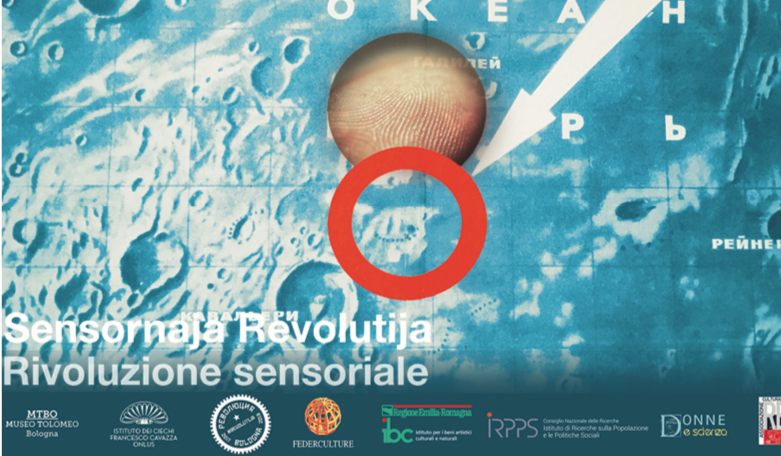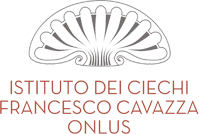On January 25, 2018, at the Tolomeo Museum's Atelier of the Institute for the Blind Francesco Cavazza, was inaugurated the Sensornaja Revolutija [Sensorial Revolution] exhibition, curated by Lucilla Boschi and Fabio Fornasari.
The exhibition has been included as a side event of REVOLUTIJA. From Chagall to Malevich, from Repin to Kandiskij, the exhibition was organized at the MoMA Museum of Modern Art in Bologna in collaboration with the State Russian Museum in St. Petersburg. The starting point of the exhibition is a private collection of Soviet books on space flights from the fifties to the eighties of the twentieth century, documenting at a cultural level the October revolution brought into the cosmos, and at the same time showing the meaning of sensory deprivation to which the cosmonaut is subjected in preparation for the flight. A true library, consisting of 300 books whose contents are made accessible through three-dimensional models accompanied by narration that can be enjoyed in different ways: through a guided tour or through a reasoned Braille bibliography available to visitors.

The twentieth century has accompanied us in its aesthetic, scientific and political revolutions through an articulated editorial production. Books, magazines, pamphlets, and posters have been the privileged medium of artists, poets, intellectuals who have shared and experimented with new languages. The book on space flights collects and testifies from the Soviet side this research on communication also affected by the era of socialist realism.
These are not only means of communication, but also aesthetic products, where is consolidated the relationship between visual product and intellectual product.
Books on space flights show us a very articulate world. One might think that it is a universe of ideologies. Looking carefully at them, we see how the journey in space begins with a Russian soul, the same that we find in the best-known literature. If with Šklovskij the Russian poetic formalism experiments in the editorial form of the essay the scientific dimension, with the publications on space flights - in particular the biographies of the first cosmonauts - the Soviet scientific rhetoric recovers a poetic dimension that also passes through the recognition of science fiction as a complete literary dignity saving it from the category of genre literature where it is placed in the rest of Europe. Why an exhibition on space flights, then?
An exhibition always has a goal: to make sense of chaos. It does so by isolating elements to tell a story and build continuity, because if sensationalistic stories told by newspapers focus on rupture, history has the task of looking for the roots. We believe this is one of the Tolomeo Museum's responsibilities: dig down to the roots and build history that allows access to knowledge.

.png)



.png)